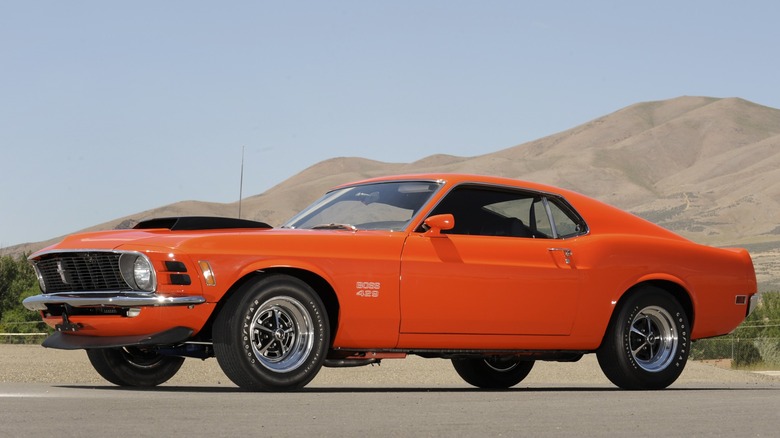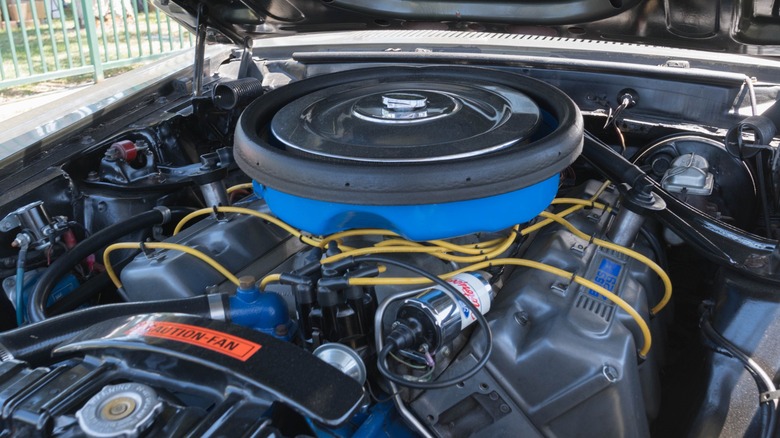Is The Ford Boss 429 Engine Really A Hemi?
In gearhead terminology, the word hemi refers to the generally hemispherical shape of an engine's cylinder head combustion chamber. In the truest sense of the word, no automobile engine actually has a fully hemispherical combustion chamber. However, according to the looser hemi definition, the Ford Boss 429 engine is considered a hemi design.
Of course, Chrysler devoted years of research and untold dollars towards perfecting its 426 Hemi V8 for use in NASCAR, as well as a version designed for the street for use in its muscle cars like the Plymouth Cuda, Dodge Charger, and Super Bee. However, the 426 Hemi's track dominance forced a big block engine showdown with Ford's own hemi design, the Boss 429.
Luckily for muscle car fans, NASCAR rules at the time required automakers to make production versions of racing engines available to the general public. While Chrysler installed the 426 Hemi in a variety of production vehicles, Ford shoehorned the Boss 429 into its 1969 Mustang.
Why did Ford use the hemi design for the Boss 429?
According to MotorTrend, the term "semi-hemi" more accurately describes the partially hemispherical shape of the hemi engine cylinder head combustion chamber. Geometric definitions aside, the hemi design provides some unique advantages and disadvantages over the more traditional wedge-shaped combustion chamber.
One of the hemi head design's most significant advantages is the canted arrangement of the intake and exhaust valves. The dome-shaped chamber requires the valves to lay at an angle to the centerline axis of the cylinder bore, allowing valves with larger diameters to be used compared to those in a wedge-shaped chamber. In addition to the larger valve openings allowing more airflow through the combustion chamber, the taller chamber results in less flow interference from the cylinder wall.
Another hemi advantage is that its combustion chamber and related piston shape encourage peak compression earlier in the compression stroke. The increased efficiency promotes a quicker, more complete fuel burn earlier, transferring more power to the crankshaft than other traditional engine designs.

